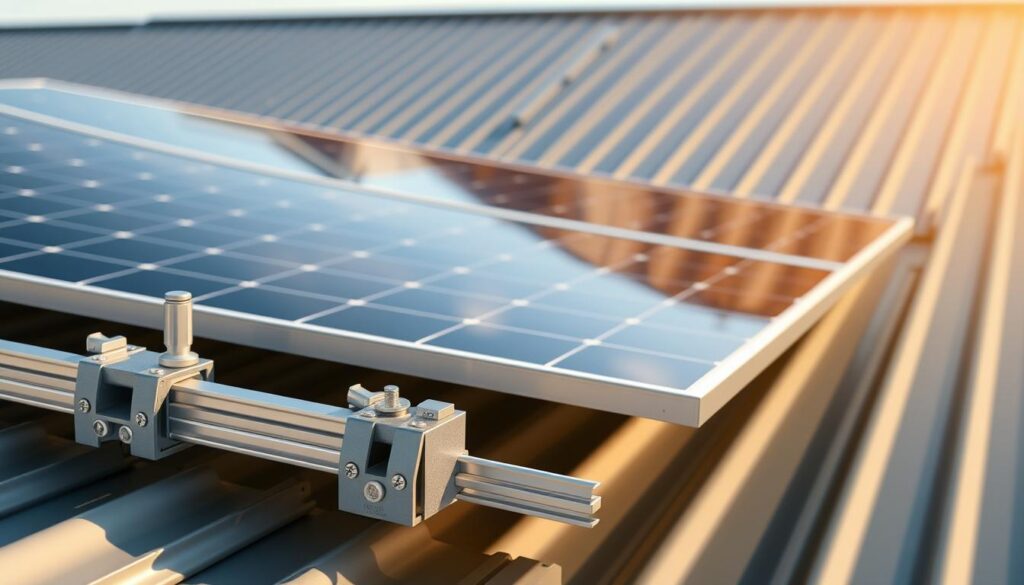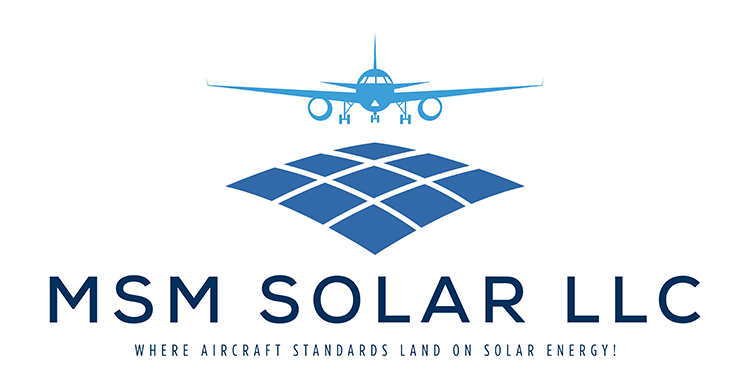Did you know metal roofs last twice as long as traditional asphalt ones?
While asphalt lasts 12-30 years, metal can endure 40-70 years, perfectly matching the lifespan of most solar energy systems. I learned this the hard way after watching neighbors struggle with costly reinstallations when their asphalt roofs wore out.
When I chose a metal roof for my home, the relief was instant. No more worrying about mismatched lifespans or extra costs. DECRA Metal Roofing’s lightweight design (just 1.4-1.6 lbs/sq ft) handled the weight effortlessly. But improper installations can still cause leaks, something we’ll cover next.
Want a stress-free setup?
Call MSM Solar LLC at (850) 737-5197 or get a free quote today!
Key Takeaways
- Metal roofs last 40-70 years, aligning with solar system warranties
- Lightweight design supports arrays without reinforcement
- DECRA leads in solar-ready metal roofing solutions
- Asphalt roofs often require costly solar reinstallations
- Professional installation prevents leaks and damage
Solar Cost Calculator – Florida Panhandle Only
* Estimate based on $3.25 per watt for solar installation.
* For Tesla Powerwall 3 Batteries, $15,000 for the first battery, $12,000 for each additional battery.
* Other variations and types of Batteries are available.
Why Metal Roofs Are Ideal for Solar Panels
When my cousin in Phoenix switched to a metal roof, his energy bills dropped instantly. His cooling costs fell by $200/month, thanks to the roof’s reflective surface and paired solar setup. It’s no surprise the EPA says metal can cut home cooling expenses by 10–25%.
Longevity and Durability
My 25-year-old metal roof still looks pristine, while neighbors replaced asphalt twice in the same period. Metal lasts 40–70 years, matching solar system lifespans perfectly. No more mismatched upgrades or wasted investments.
Energy Efficiency and Cooling Benefits
Before my metal roof, summers felt like an oven. Now, the reflective surface keeps my home cooler, and solar shading doubles the savings. Standing seam designs even allow clamp-on mounts, zero drilling means zero leaks.
Bonus: Tax credits sweeten the deal:
- 26% federal ITC for solar + metal roof combos
- State incentives (check your local programs)
Types of Metal Roofs and Their Solar Compatibility
Last summer, I helped a friend fix a leak caused by the wrong mounting system, turns out not all metal roofs are the same. Some grip energy arrays like a glove; others need careful pairing. Here’s what I’ve learned from years of matching roofs to the right hardware.
Standing Seam Metal: The Speed Install Champion
My own standing seam metal roof took just two hours to outfit. No drills, no leaks, just clamps that snap onto the raised seams. Installers love these because they’re forgiving. Ecofasten’s 10-year clamp warranty sealed the deal for me.
Corrugated Metal Roofs: Precision Required
Contrast that with a corrugated job I tackled, six hours of measuring and sealing. SnapNrack’s Straddle Blocks saved the day with center-drill waterproofing. Generic “versatile” systems? They often buckle under pressure.
Trapezoidal Metal Roofs: The Bracket Puzzle
Then there’s trapezoidal.
My friend’s leak?
Mismatched brackets. These roofs demand 15+ bracket types for a snug fit. QuickBOLT’s 4-step system (align, secure, seal, repeat) works, if you pick the right one.
Pro tip: DECRA’s 70-year warranty isn’t just marketing. It’s peace of mind that your roofing and energy products will age together gracefully.
Installing Solar Panels on a Metal Roof: Step-by-Step Guide
The morning sun hadn’t yet peeked over the horizon when my team arrived for what would be the smoothest energy upgrade I’ve ever done. With coffee in hand, we mapped out the standing seam layout, no drills, just clamps snapping into place like Lego bricks. By noon, the array was secure, and my client’s home was silently harvesting sunlight.

Choosing the Right Mounting System
Early in my career, I used generic brackets on a corrugated roof. Big mistake. The mounting systems shifted during a storm, causing $1,200 in repairs. Now, I insist on Ecofasten clamps for standing seam or QuickBOLT’s sealed brackets for trapezoidal designs. The right hardware cuts labor by 30%.
Clamp vs. Drill: Minimizing Roof Damage
That $3,800 drilled system seemed cheaper, until resealing costs added $1,500. Clamp-on options cost more upfront ($4,500) but install solar arrays faster and preserve warranties. For corrugated roofs, laser guides prevent slips that lead to leaks (ask me how I know).
Preventing Leaks with Proper Sealing
MSM Solar taught me their 3-step sealant method after my silicone disaster: butyl rubber base, gasketed brackets, and torque-sensitive screws. Solar installations demand this precision, 80% of leaks stem from rushed screw placements. Now, I sleep soundly after every project.
Safety Considerations for Solar Installations on Metal Roofs
Safety wasn’t my top priority until my harness snagged on a roof seam mid-install. That heart-stopping moment taught me that metal roofs solar setups demand rigorous protocols. Now, I treat every project like a high-wire act, because it is.

Fall Protection and Anchor Systems
OSHA’s rule of 6,000-lb anchors every 25 feet seemed excessive, until a gust nearly toppled my coworker. Cheap $120 anchors bent under pressure, while the $350 system held firm. Always verify load ratings before climbing.
For sloped surfaces, I use dual-point lanyards after my seam incident. Solar installers should also check for:
- Corrosion-resistant hardware (galvanized or stainless steel)
- Pre-installed anchor points from manufacturers like DECRA
- MiaSolé thin-film panels for older homes needing weight relief
Weatherproofing and Long-Term Maintenance
That client’s 3-year leak?
Missing butyl tape. Now, I layer sealants like armor: rubber base first, then gaskets, and torque-controlled screws. Drilled mounts need resealing every 5 years, clamps last 10 with simple checks.
Bi-annual gutter cleanings prevent backups that strain roofing. MSM Solar’s free first-year inspection caught loose brackets I’d have missed. Their checklist covers:
- Clamp tightness (40–60 psi torque)
- Sealant integrity (no cracking or peeling)
- Panel alignment (shifting causes micro-fractures)
Investing time upfront saves thousands later. My worst installations taught me that safety and care aren’t steps, they’re the foundation.
Conclusion
Seeing my neighbors’ shocked faces when I showed them my $12 electric bill never gets old. That’s the power of pairing solar panels with a metal roof, our system paid for itself in just 9 years. Now’s the time: the 26% tax credit drops to 22% in 2023.
When hurricanes tore through last season, my metal roof stood firm while asphalt roofs failed. Better yet, our setup prevents 400+ tons of CO2, like planting 10,000 trees. That’s real energy independence.
For your home, trust MSM Solar’s veteran team. They’ll optimize your solar panels cost and warranty. Call (850) 737-5197 or get a free quote today!




